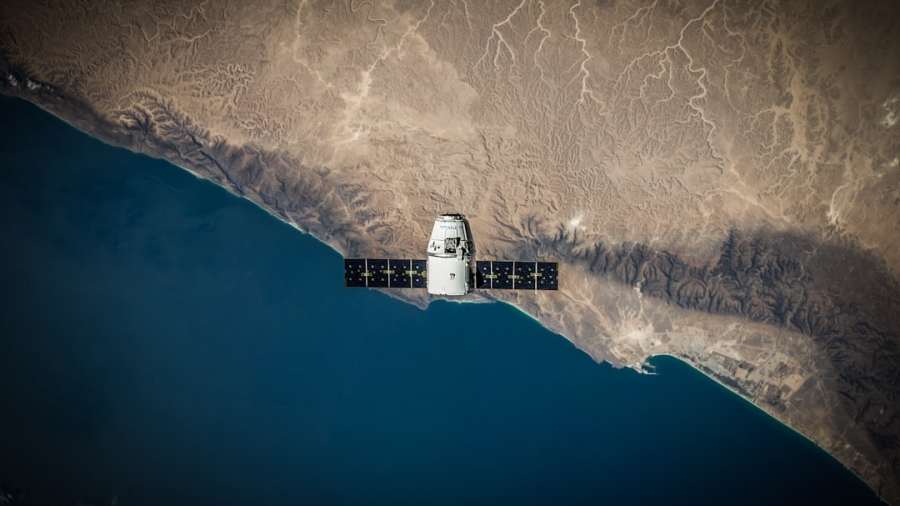Artificial Intelligence (AI) has emerged as a transformative force across various sectors, and its potential to address climate change is particularly noteworthy. Climate change, driven by human activities such as fossil fuel combustion, deforestation, and industrial processes, poses one of the most significant challenges of our time. The consequences of climate change are far-reaching, affecting ecosystems, weather patterns, and human health.
As the urgency to mitigate these impacts grows, the integration of AI technologies into climate science and environmental management offers promising avenues for innovation and efficiency. By harnessing vast amounts of data and employing sophisticated algorithms, AI can enhance our understanding of climate dynamics, improve predictive models, and facilitate the development of sustainable practices. The intersection of AI and climate change is not merely a technological curiosity; it represents a critical opportunity to leverage advanced computational capabilities in the fight against environmental degradation.
AI can analyze complex datasets that would be impossible for humans to process in a reasonable timeframe, enabling researchers and policymakers to make informed decisions based on real-time information. From predicting extreme weather events to optimizing energy consumption in urban areas, AI’s applications are diverse and impactful. As we delve deeper into the various roles AI can play in combating climate change, it becomes evident that this technology is not just a tool but a vital partner in our quest for a sustainable future.
Key Takeaways
- AI has the potential to revolutionize the way we monitor and address climate change, offering new tools and insights for sustainable solutions.
- AI can help in monitoring and predicting climate change by analyzing large datasets and identifying patterns and trends that may not be immediately apparent to human observers.
- AI can be used to assess the environmental impact of human activities, such as deforestation or industrial emissions, by analyzing satellite imagery and other data sources.
- AI can identify climate change hotspots by analyzing data on temperature changes, sea level rise, and other indicators to pinpoint areas most at risk.
- AI can play a key role in developing sustainable solutions to climate change by optimizing energy use, improving resource management, and supporting renewable energy technologies.
Monitoring and Predicting Climate Change with AI
Enhanced Predictive Capabilities
Machine learning algorithms can identify patterns and trends in this data, allowing scientists to make more accurate predictions about future climate conditions. For instance, AI can analyze historical weather data alongside current atmospheric conditions to forecast extreme weather events such as hurricanes or droughts, providing critical information for disaster preparedness and response.
Comprehensive Climate Modeling
By integrating various data sources—such as greenhouse gas emissions, land use changes, and ocean temperatures—AI can help create more comprehensive models that simulate future climate scenarios. These models are essential for understanding potential impacts on ecosystems and human societies, guiding policymakers in developing effective mitigation strategies.
A Brighter Future for Climate Monitoring
As AI continues to evolve, its role in climate monitoring and prediction will likely expand, offering even more sophisticated tools for understanding the complexities of our changing planet.
AI in Assessing Environmental Impact
AI is also playing a crucial role in assessing the environmental impact of various human activities. Traditional environmental assessments often involve labor-intensive field studies and extensive data collection, which can be both costly and time-consuming. However, AI technologies can streamline this process by automating data analysis and providing insights that would otherwise require significant human resources.
For example, remote sensing technologies powered by AI can analyze satellite imagery to assess deforestation rates, track changes in land use, and monitor biodiversity loss. This capability allows for more timely and accurate assessments of environmental impacts, enabling stakeholders to respond more effectively. Furthermore, AI can enhance the evaluation of specific projects or policies by simulating their potential environmental consequences.
By employing predictive modeling techniques, AI can estimate how proposed developments—such as infrastructure projects or agricultural expansions—might affect local ecosystems and contribute to climate change. This information is invaluable for decision-makers who must weigh economic benefits against environmental costs. As organizations increasingly recognize the importance of sustainability, AI-driven assessments will become integral to ensuring that development aligns with ecological preservation.
AI in Identifying Climate Change Hotspots
Identifying climate change hotspots—regions that are particularly vulnerable to the effects of climate change—is another area where AI demonstrates significant potential. These hotspots may experience more severe impacts due to factors such as geographical location, socio-economic conditions, or existing environmental stressors. By analyzing a combination of climatic data, socio-economic indicators, and ecological information, AI can help pinpoint areas at greatest risk.
This targeted approach allows for more efficient allocation of resources and tailored interventions that address the unique challenges faced by these vulnerable regions. AI’s ability to process large datasets also enables researchers to identify emerging trends that may not be immediately apparent through traditional analysis methods. For instance, machine learning algorithms can detect shifts in species distributions or changes in agricultural productivity linked to climate variability.
By recognizing these patterns early on, stakeholders can implement proactive measures to mitigate adverse effects before they escalate into crises. As the impacts of climate change become increasingly pronounced, the role of AI in identifying hotspots will be crucial for prioritizing conservation efforts and enhancing community resilience.
AI in Developing Sustainable Solutions
The development of sustainable solutions is perhaps one of the most promising applications of AI in the context of climate change. As industries seek to reduce their carbon footprints and transition towards greener practices, AI can facilitate this shift by optimizing processes and enhancing efficiency. For example, in the energy sector, AI algorithms can analyze consumption patterns and predict demand fluctuations, allowing for better integration of renewable energy sources such as solar and wind power into the grid.
This optimization not only reduces reliance on fossil fuels but also minimizes waste and lowers costs for consumers. In agriculture, AI technologies are being employed to promote sustainable farming practices that minimize environmental impact while maximizing productivity. Precision agriculture techniques utilize AI-driven analytics to monitor soil health, crop conditions, and weather patterns.
This information enables farmers to make informed decisions about irrigation, fertilization, and pest control—practices that can significantly reduce resource use and environmental degradation. By fostering innovation across various sectors, AI is paving the way for a more sustainable future that aligns economic growth with ecological preservation.
Challenges and Limitations of AI in Tracking Climate Change
Data Quality and Availability
One significant hurdle is the quality and availability of data. While AI excels at processing large datasets, it relies on accurate and comprehensive information to produce reliable results. In many regions, especially developing countries, data collection infrastructure may be lacking or inconsistent. This gap can lead to biased models that fail to capture the full scope of climate impacts or misinform policy decisions.
Complexity of Climate Systems
Another challenge lies in the complexity of climate systems themselves. Climate change is influenced by a multitude of interrelated factors—ranging from natural phenomena like volcanic eruptions to human activities such as industrial emissions. Developing models that accurately reflect these complexities requires sophisticated algorithms and significant computational power.
Risk of Complacency
Additionally, there is a risk that over-reliance on AI could lead to complacency among policymakers or stakeholders who may assume that technology alone can solve climate issues without considering broader systemic changes needed for effective action.
Ethical Considerations in AI and Climate Change Tracking
As with any powerful technology, ethical considerations surrounding the use of AI in tracking climate change must be carefully examined. One primary concern is the potential for bias in AI algorithms that could exacerbate existing inequalities or disproportionately affect marginalized communities. If not designed with inclusivity in mind, AI systems may overlook critical local knowledge or fail to account for the unique vulnerabilities faced by certain populations.
Ensuring that diverse voices are included in the development and implementation of AI solutions is essential for promoting equity in climate action. Moreover, transparency in AI decision-making processes is vital for building trust among stakeholders. As AI systems become more integrated into climate policy decisions, it is crucial that their methodologies are understandable and accessible to non-experts.
This transparency fosters accountability and allows communities to engage meaningfully with the technology being used to address their environmental challenges. By prioritizing ethical considerations alongside technological advancements, we can ensure that AI serves as a force for good in the fight against climate change.
The Future of AI in Addressing Climate Change
Looking ahead, the future of AI in addressing climate change appears promising yet requires concerted efforts from multiple stakeholders. As technology continues to advance, we can expect even more sophisticated applications of AI that enhance our ability to monitor environmental changes and develop effective mitigation strategies. Collaborative initiatives between governments, research institutions, and private companies will be essential for driving innovation while ensuring that ethical considerations remain at the forefront of these efforts.
Furthermore, as public awareness of climate issues grows, there will likely be increased demand for transparent and accountable AI solutions that empower communities to take action against climate change. By fostering an inclusive dialogue around the role of technology in sustainability efforts, we can harness the full potential of AI while addressing its limitations and ethical implications. Ultimately, the integration of AI into our climate response strategies holds great promise for creating a more resilient and sustainable world for future generations.
While exploring the role of AI in tracking climate change impact, it’s also essential to consider the technological tools that support such advanced research and analysis. For those involved in environmental modeling or data-intensive tasks related to climate studies, having the right hardware is crucial. A related article that reviews the best laptops for handling demanding software like Blender can be incredibly useful. These laptops are not only suitable for graphic design and animation but also powerful enough for complex data processing and simulations needed in climate change research. You can read more about the top picks and reviews of such laptops here.
FAQs
What is the role of AI in tracking climate change impact?
AI plays a crucial role in tracking climate change impact by analyzing large amounts of data from various sources such as satellite imagery, weather patterns, and environmental sensors. It can identify patterns and trends that may not be immediately apparent to human analysts.
How does AI help in monitoring and predicting climate change effects?
AI helps in monitoring and predicting climate change effects by processing and analyzing complex data sets to identify correlations and make predictions about future climate patterns. This can help in understanding the potential impact of climate change on different regions and ecosystems.
What are some specific applications of AI in tracking climate change impact?
Some specific applications of AI in tracking climate change impact include monitoring deforestation, analyzing ocean temperatures and currents, predicting extreme weather events, and assessing the impact of climate change on wildlife habitats.
How does AI contribute to improving climate change mitigation and adaptation strategies?
AI contributes to improving climate change mitigation and adaptation strategies by providing valuable insights and predictions that can inform policy decisions and resource allocation. It can also help in identifying areas that are most vulnerable to climate change and prioritize adaptation efforts.
What are the potential challenges and limitations of using AI in tracking climate change impact?
Some potential challenges and limitations of using AI in tracking climate change impact include the need for high-quality and reliable data, the potential for bias in AI algorithms, and the complexity of modeling and predicting complex environmental systems. Additionally, there may be ethical considerations related to the use of AI in environmental monitoring.



